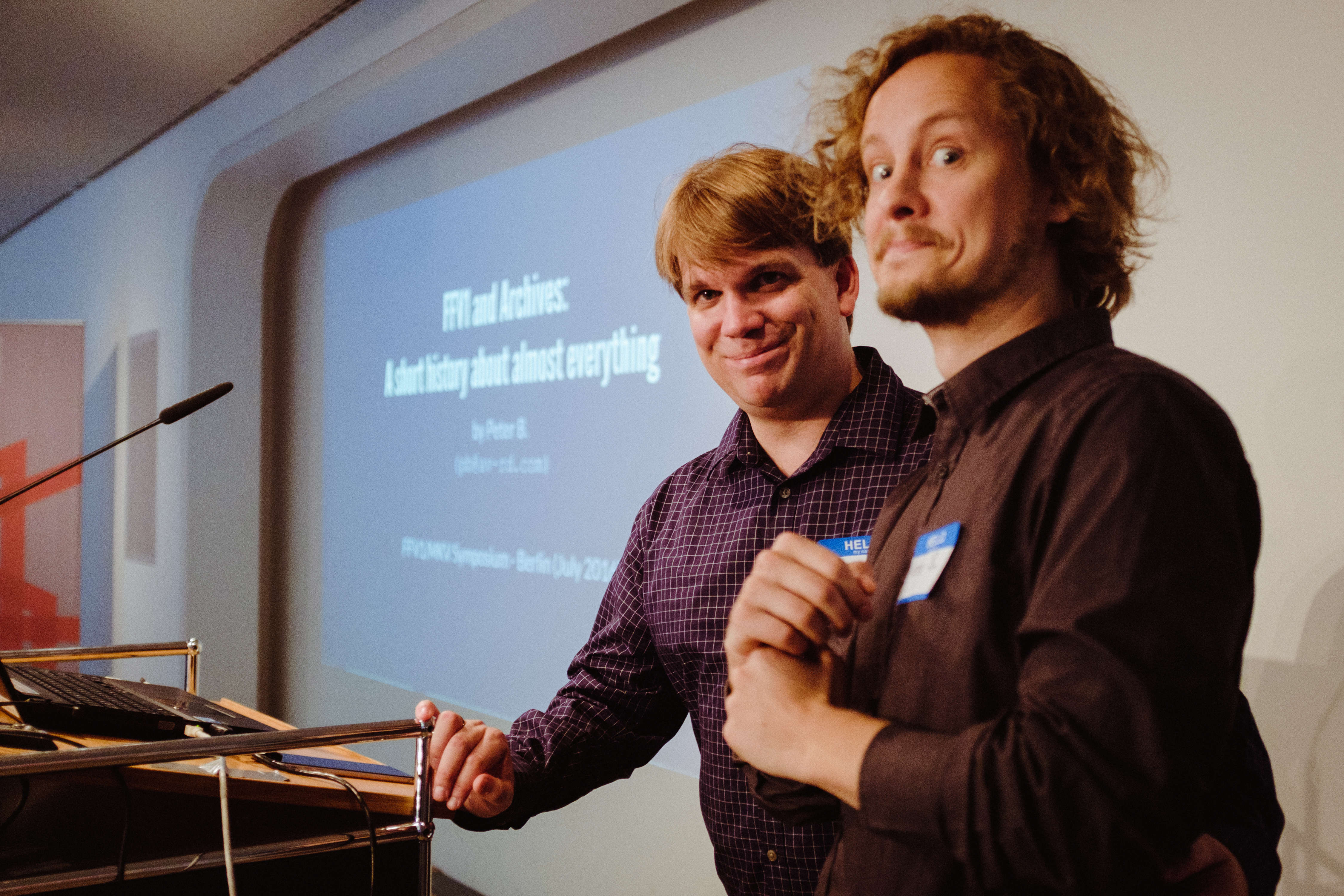FFV1 im AV Archivbereich
(nestor Webinar)
(nestor Webinar)
(p.bubestinger@av-rd.com)2021-05-20
FFV1: Was bringt’s? Was kann’s? Was kostet’s? Und wie geht’s weiter?
FFV1: Was bringt’s?
It saves disk space (*)
- No generation loss, bit-proof encoding.
- Master for generating different format (access) copies.
- It “just works™”
At highest quality.
+Significant Properties = safe. long-term. open.
How it all began…?
Format consensus and interoperability:
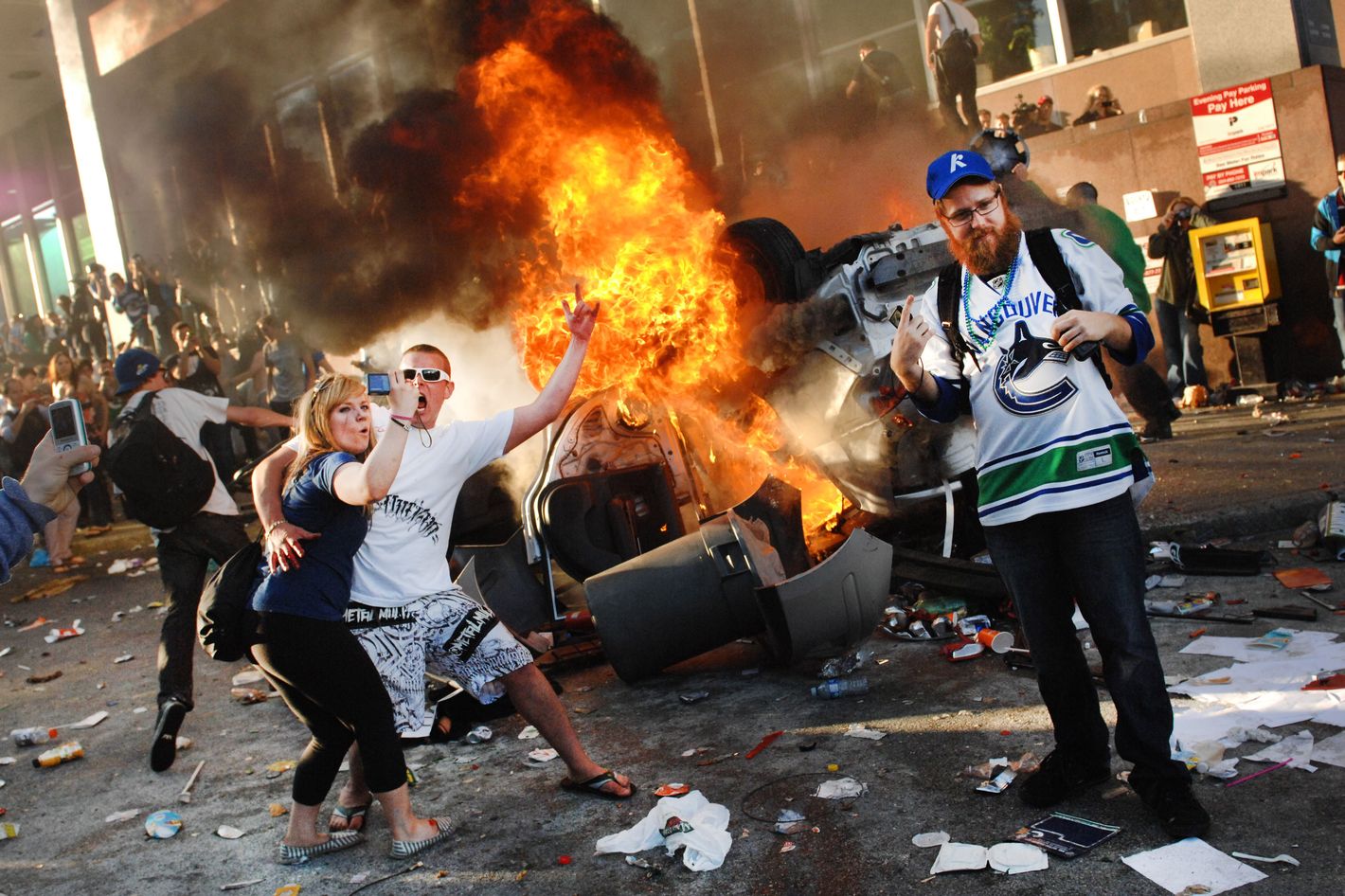
2009, AT, Vienna
Hermann Lewetz at the Austrian Mediathek wanted to apply the same principles to video preservation as we all agree on the standards for audio:
Lossless or uncompressed, if possible. Lossy is to be avoided.
See: IASA-TC 03
Uncompressed, J2K, MXF: Okay. But tricky.
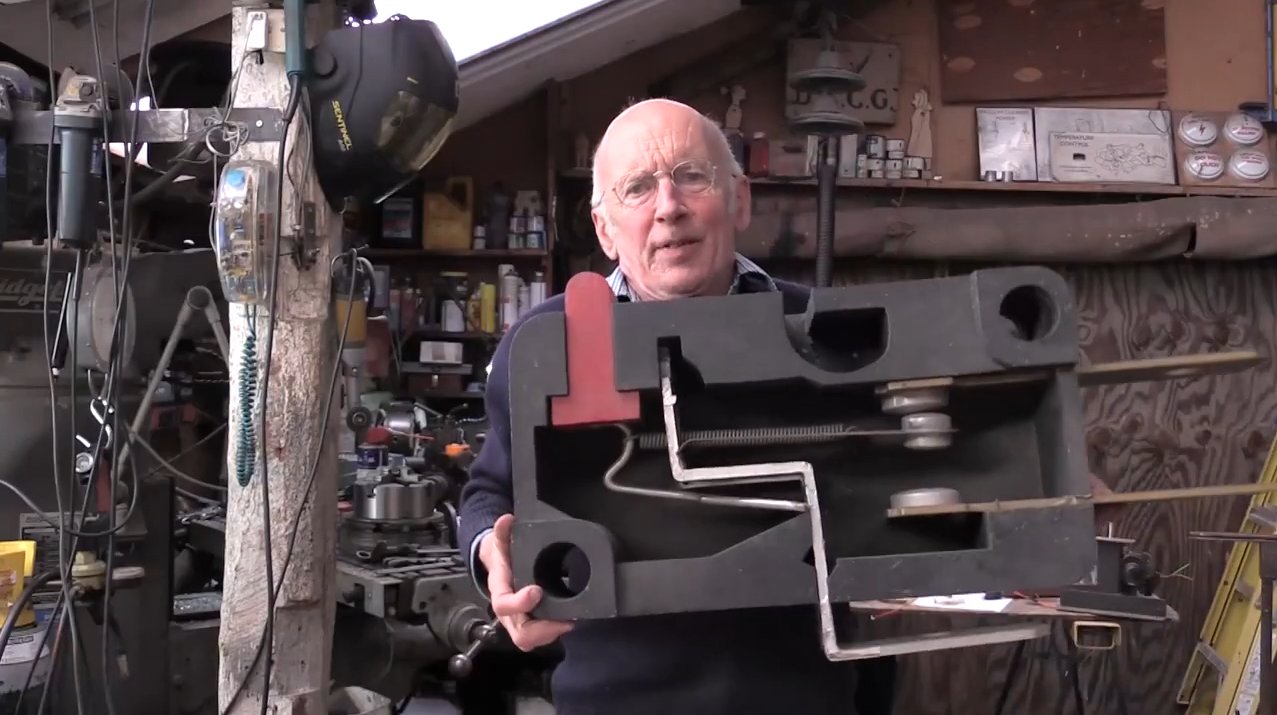
Options?
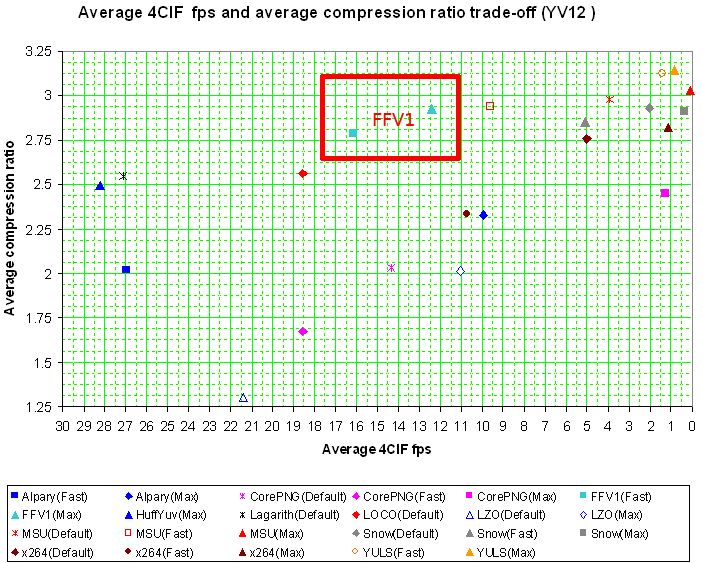
The format consensus was… in 2014!
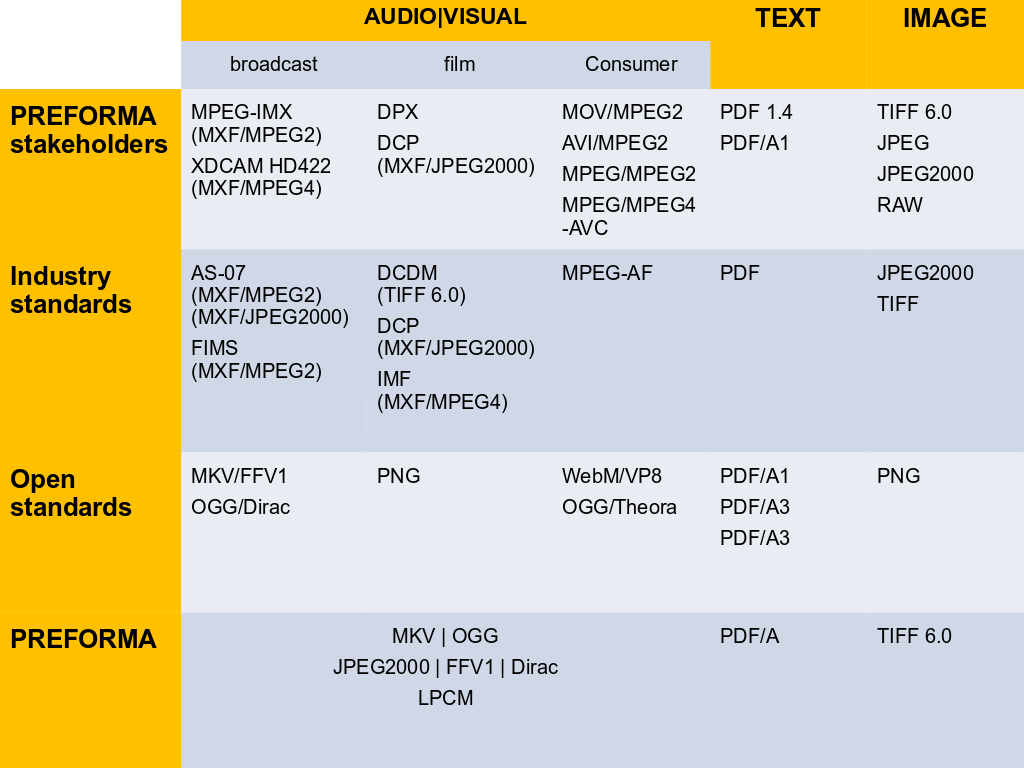
FFmpeg & FFV1: Getting involved.

Plus: ©onflicts of Inte®est℠™

How dare you…
“…keeping us from wanting to do affordable, easy, open and interoperable lossless? For long-term reasons.”
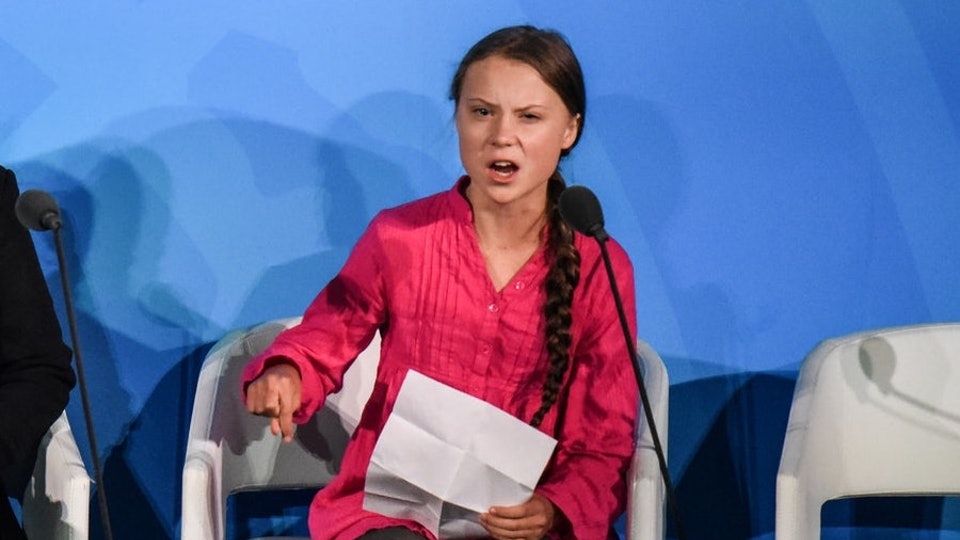
FFV1: A short history about almost everything
- 2003: FFV1 created in Open Source project “FFmpeg”
- 2006: Bitstream frozen (version 1)
- 2009: Picked up for preservation
- 2010: Funding improvements (Mediathek)
- 2012: Added 14bit RGB, Multithreading, SliceCRC
- 2013: Official release of “FFV1.3”
- 2014: PREFORMA Project
- 2016: IETF Standardization in progress
- 202+: Number of FFV1 users growing. Fast.
FFV1: 2021?
Practically the current defacto (and soon IETF) standard lossless preservation format.
And it’s Free and Open Source, so accessible and usable without artifical restrictions.
FFV1: Was kann’s?
Page 1
- Absolutely completely reversible lossless compression.
- Always lossless. Nothing to misconfigure.
- Similar compression as J2K (but faster).
- Not the fastest lossless codec, but best speed/size/support ratio.
- …
Fast enough for SD editing in realtime

Quality (original = lossless)
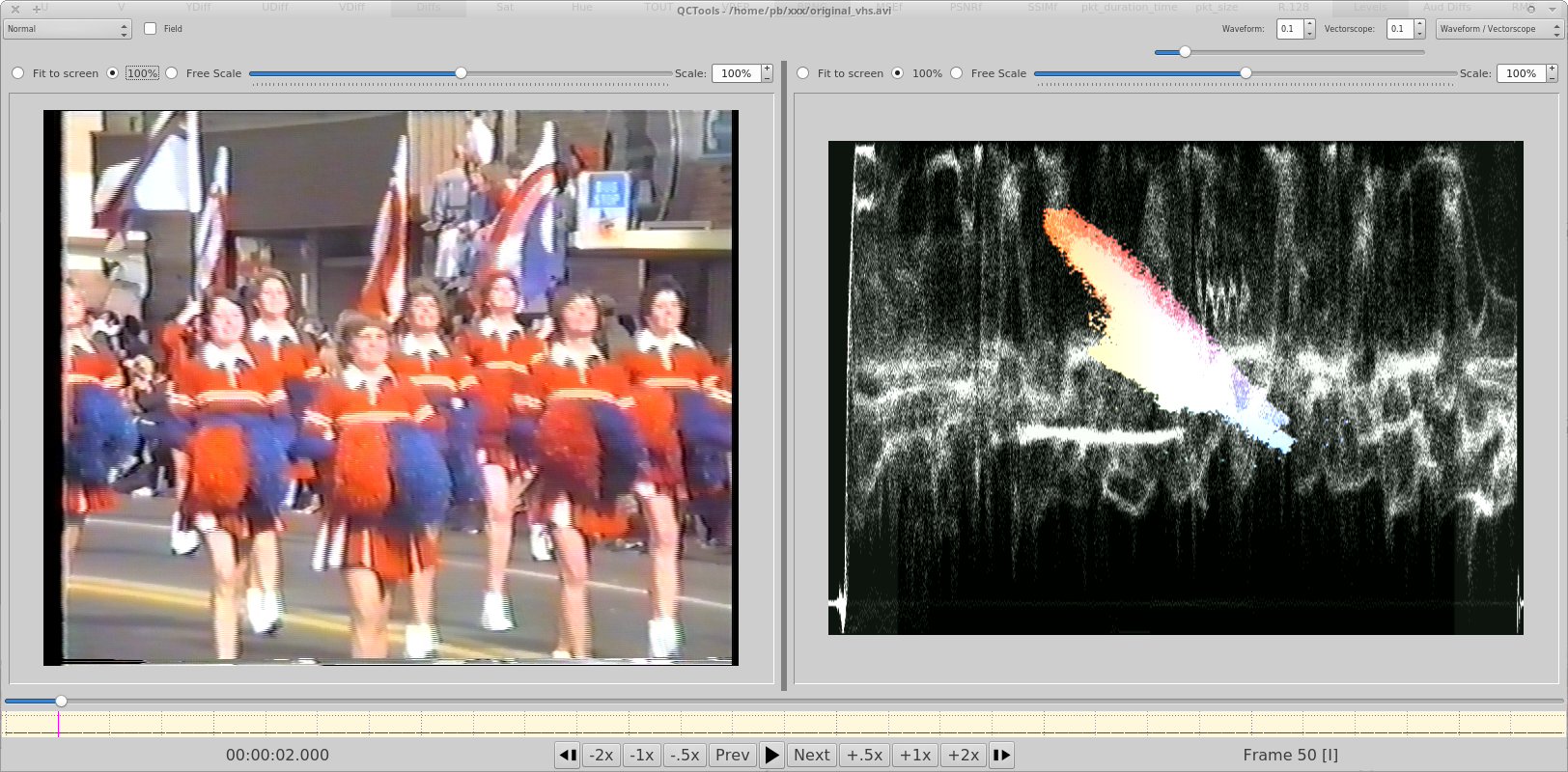
Quality (x264 8Mbps)
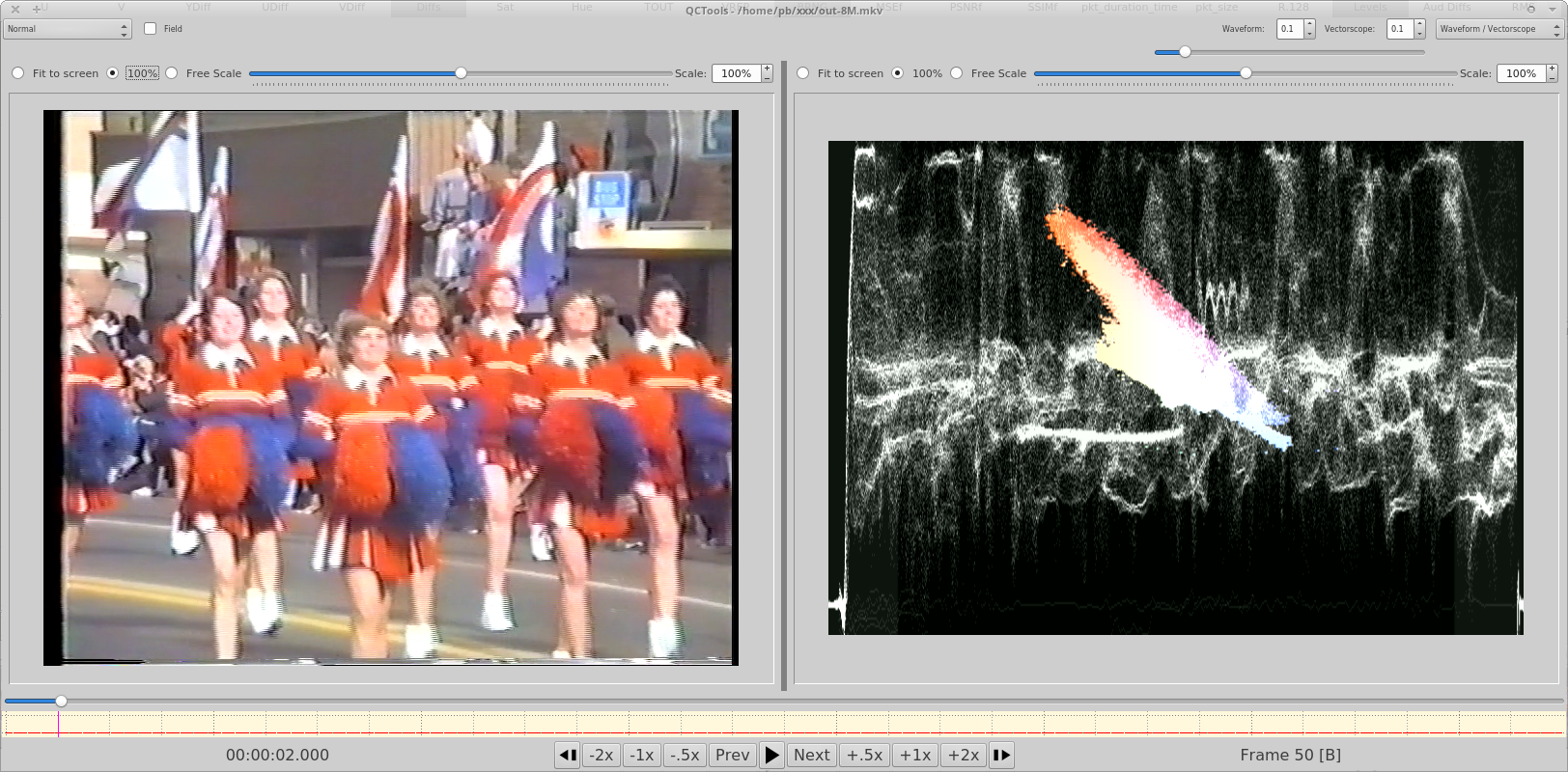
Quality (x264 2Mbps)
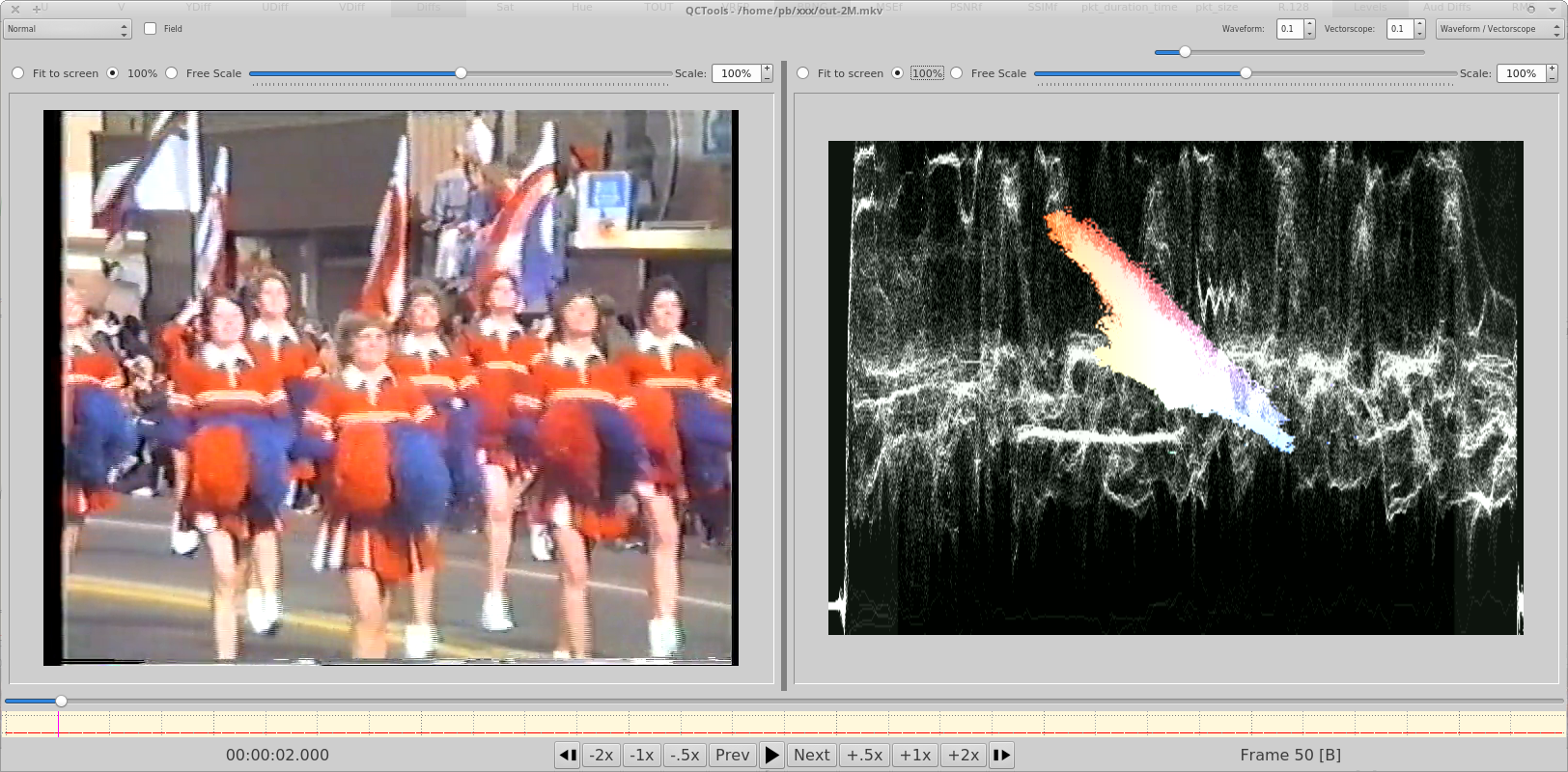
Quality (x264 850k)

Quality (x264 200k)
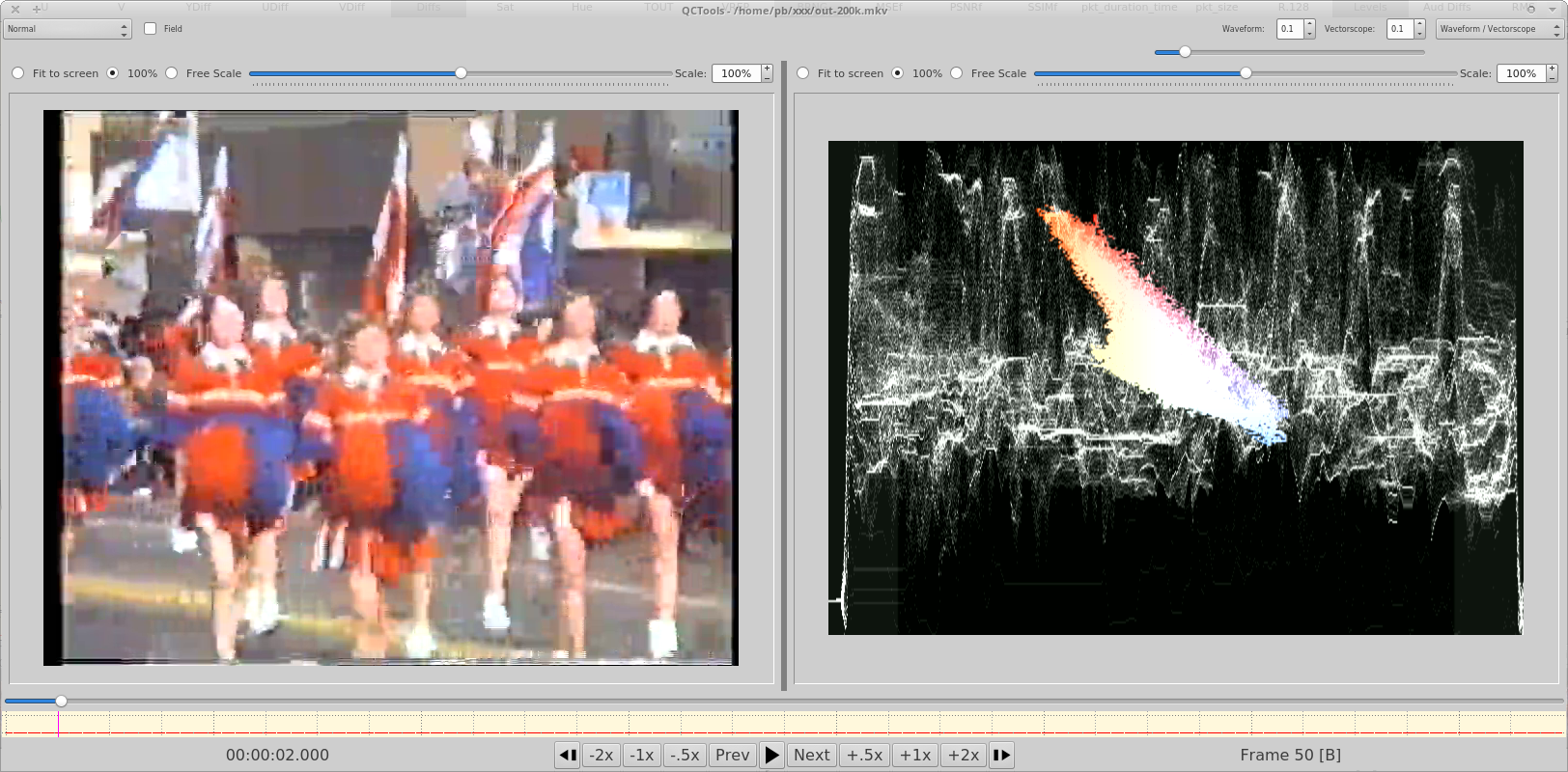
FFV1: Was kann’s?
Page 2
- Preserves almost all common “pix_fmts” as-is.
- Open since day 1.
- YUV + RGB up to 16bpc (*)
- Widely supported by now (thx to FFmpeg libs).
- Easy to migrate to other/future formats.
- Error detection built-in (Slices)
Slices
 Example what 9 slices would look like.
Example what 9 slices would look like.
Error detection/concealment

What is MKV?
“The Matroska Multimedia Container is a free, open-standard container format, a file format that can hold an unlimited number of video, audio, picture, or subtitle tracks in one file.”
Source: Wikipedia: Matroska
What is MKV?
- It’s a container (like MOV, AVI, MXF)
- Initial release: December 2002
- IETF standardization in progress.
- Also Open since day 1.
- And btw: the base for Google’s “WebM” format
MKV is awesome.
- Can contain/keep almost any source material (*)
- Which is good for preservation
- Like: any codecs, VBR, VFR, color infos, etc etc
- Well documented and well supported (*)
- It’s tech-design allows adaptability to future things.
FFV1 & MKV = ❤️
- FFV1 goes well into: MKV, but also AVI/MOV.
- All 3 combinations are preservation-approved.
- With MKV being the most vendor-neutral and open/accessible option.
- Not only stable, but future-proof.
- Theoretically no format obsolescence issues.
Users: Moving to FFV1/MKV
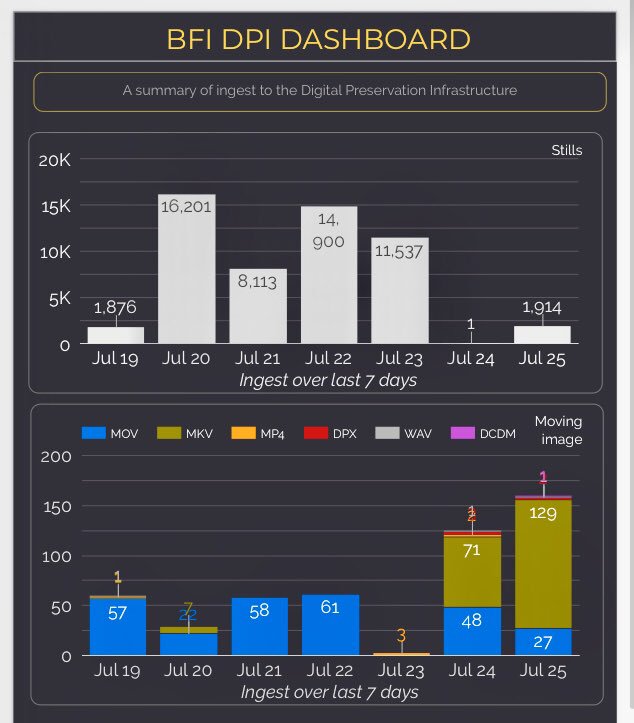
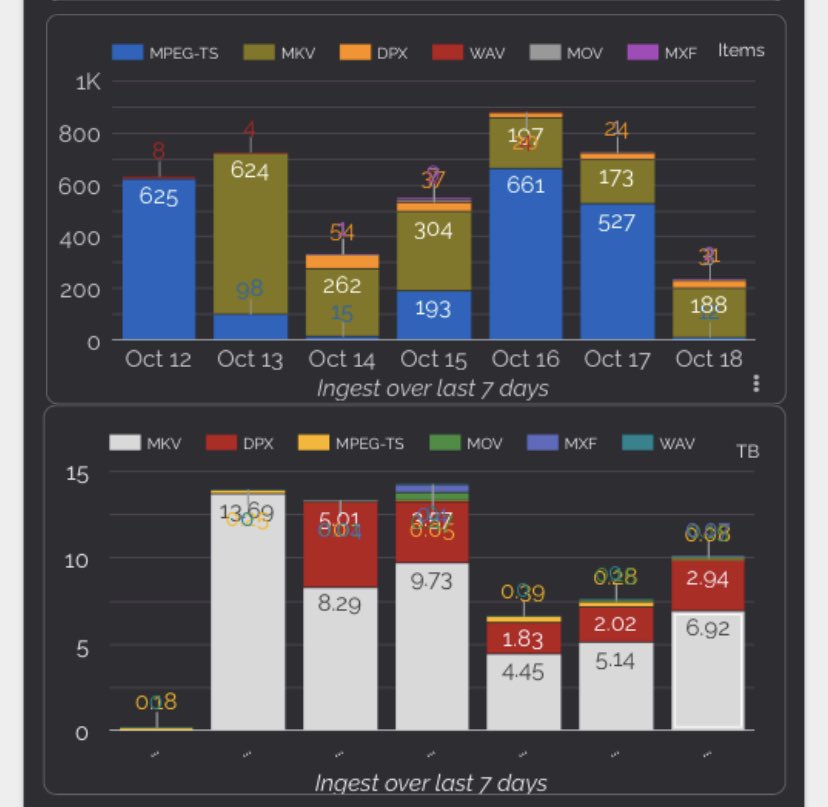
British Film Institute: 2019 vs 2020
FFV1: Performance

FFV1: Performance

Dude, it’s huge!
PAL SD (720x576px)
Uncompressed: ca. 1.37 GB/m
(< 4 min. on a DVD)
- FFV1 VHS: ca. 350 MB/min
- FFV1 DigiBeta : ca. 700 MB/min
FFV1: Size estimations
Film
- Varying between 1/3 and 2/3.
- Average = 1/2 of uncompressed.
- Better with less bits (=less noise).
Professional FFV1 Fun Facts!
- Noise compresses bad (no pattern).
- Synthetic (CGI) compresses best: ~1/9th (!)
- Lossy is always smaller.
Thanks Alex for the Data!
Frisch aus dem Archiv der sozialen Demokratie
Hardware & Speed.

How to use it?
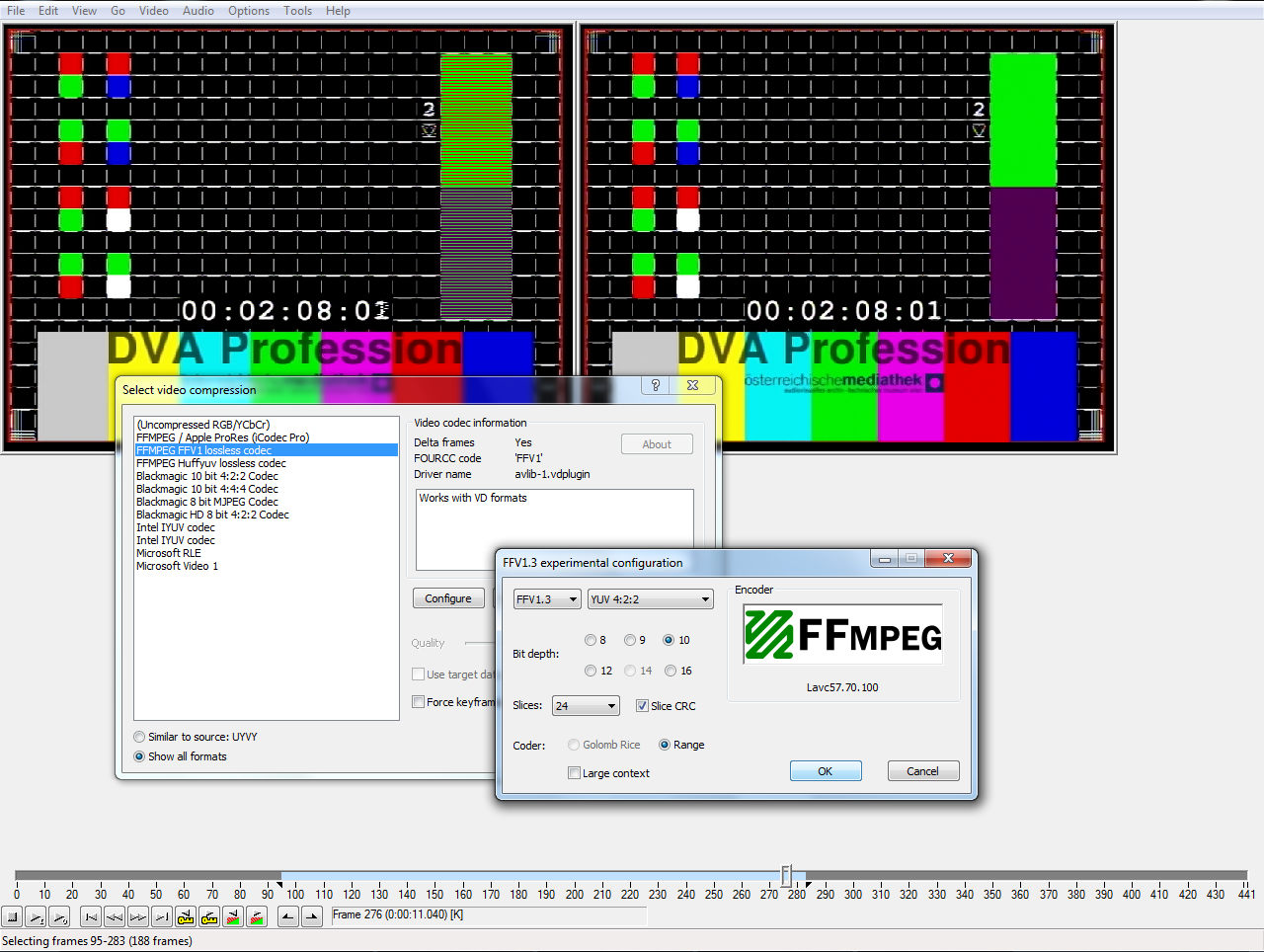
Most people however, prefer this:
$ ffmpeg -c:v ffv1 -c:a pcm_s16le -map 0 preserved_yo.mkv
(FFmpeg is king. But that’s another story.)
When to use it?
- Analogue captures.
- Normalizing (=converting) born-digital files with proprietary (non-whitelist) codecs.
- Scientific video research data.
- Personal originals.
- More backups than uncompressed.
- Network transfer.
When not to use it?
- Born digital already (=lossy encoded) in “preservable” format.
(Refer to the format whitelist approach) - If filesize simply is too much for your setup/budget to handle.
- …or simply overkill for a given use case.
- Or you prefer lossy artefacts.
The Whitelist approach
A format normalization decision for preservation:
- Does an open, FOSS licensed implementation for decoding (to uncompressed) exist?
- Is the format a documented and/or an open standard?
- Is the license/patent situation of the format (and codec implementations) resolved for unlimited access/usage?
- Can you put that in your AIP without future restrictions for access? (maybe has to run then on Unknown Future Alien Technology 3000™?)
Was kostet’s?
- Computation time (CPU).
- FOSS = Free to use, study, share & improve.
- Support- and license costs: Optional.
(Think of it like Roads and Bridges)
Rawcooked
“It’s like ZIP for film! Awesome.”®
- 1-stop-shop for image sequences (🎞️) to FFV1/PCM in MKV. 📼 💾
- And can completely bit-hashcode-proof restore the original file sequence and structure. 🥳
- Has a Free + Paid license model. 🍒
- Yes, it’s OpenSource. ✅
Und wie geht’s weiter?
- Finalize standardization.
- Better support for easier color handling.
- Continue improving tool/support landscape.
Und wie geht’s weiter?

Thanks to everyone who contributed!
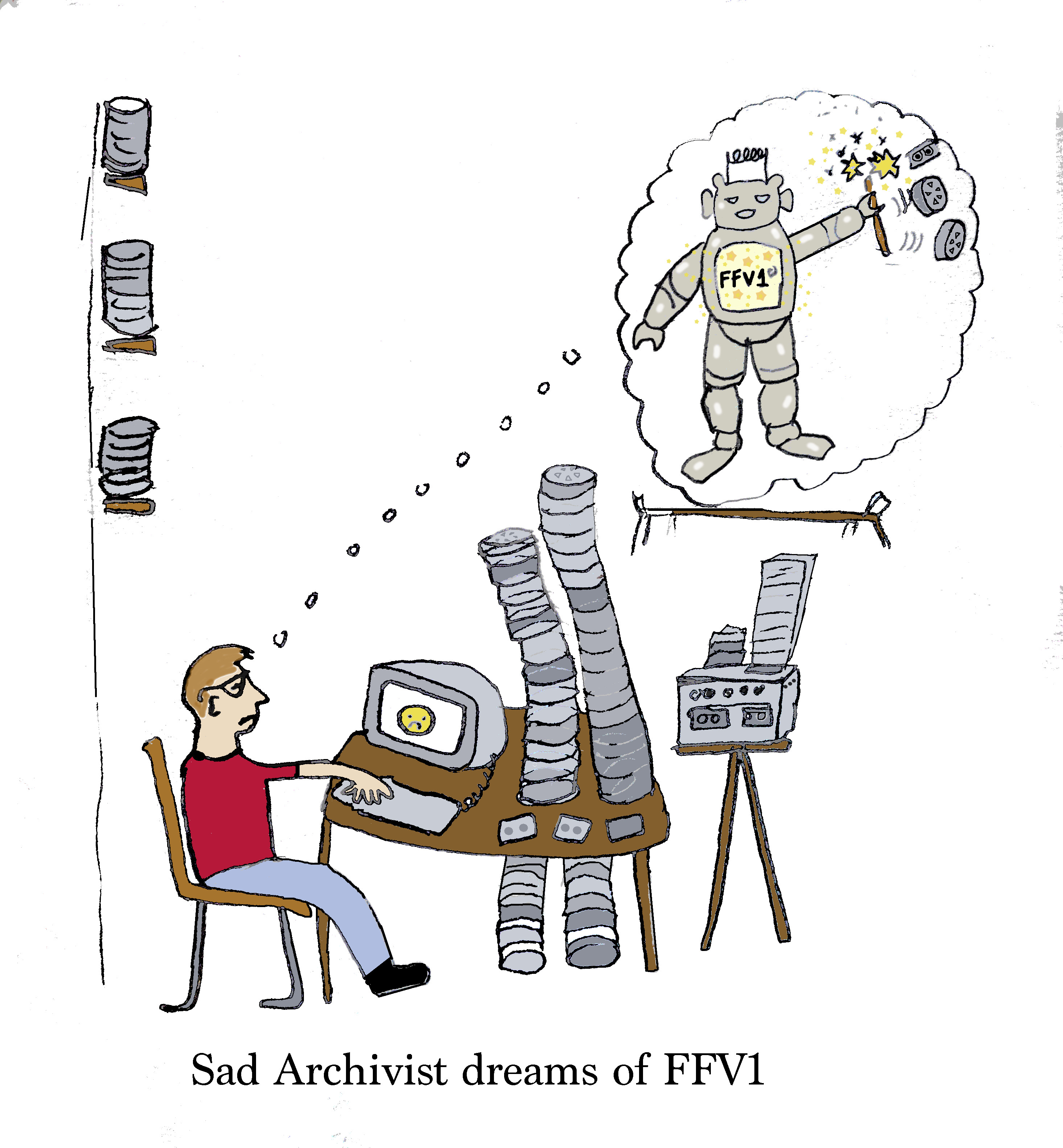
Fersch.
Frasch’n?
(ffv1@av-rd.com)
